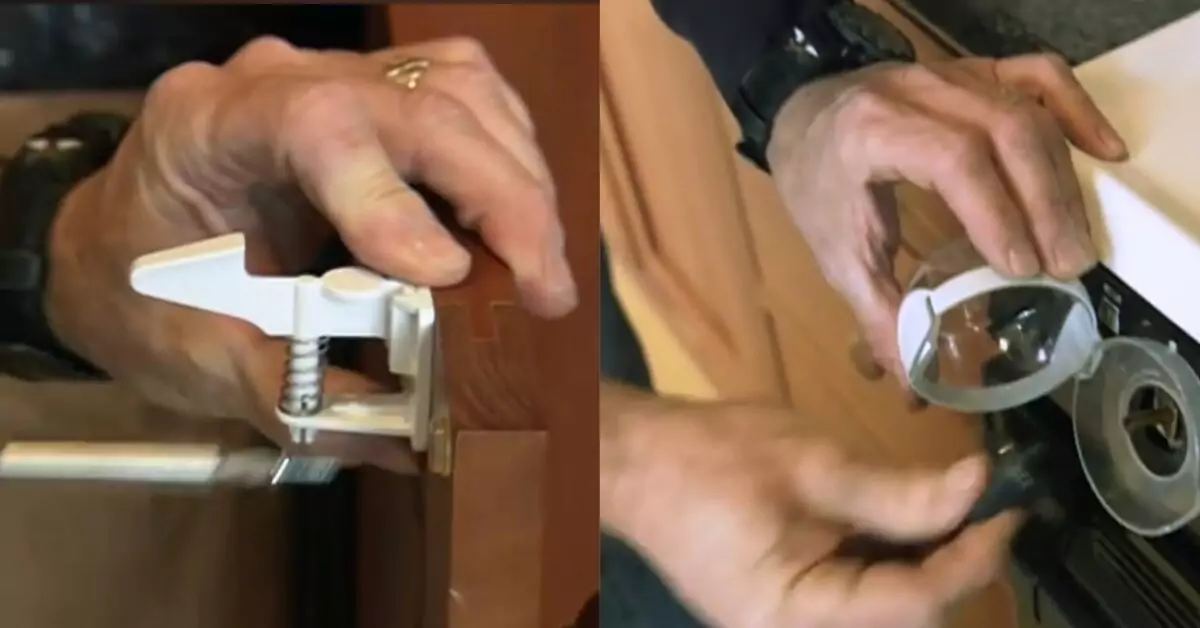How to childproof your home sounds hard at first. I felt the same the day my baby crawled straight toward a power strip. That moment pushed me into action.
In this guide, I share a real‑world plan, a printable Baby proofing house checklist, and lots of toddler proofing ideas that protect children without wrecking your living space.
You will spot smart gear, learn quick swaps, and see where a simple pool noodle can beat fancy gadgets. Ready to make every room safer?
Before jumping into he content, please follow these key points.
Key Points
- A checklist keeps you calm and on track.
- Cheap fixes—like corner guards—beat hospital bills.
- Safety never stays frozen; review gear after growth spurts.
Table of Contents
ToggleWhy These Steps Matter Childproof Your Home
Did you know? Poisoning remains a concern. In 2022, there were 102,958 deaths from preventable poisoning in the U.S., with males at a higher risk. Many of these incidents involve children accessing household products.
Accidents at home send about three million kids to U.S. emergency rooms each year. Most visits come from falls, burns, or poison.
A falling TV can crush like a small car. Hot tap water can raise skin blisters in seconds. Cleaning sprays can hurt lungs if swallowed. Numbers like these shook me, so I turned stats into actions.
First, I listed danger spots. Next, I chose one easy job each night—add plug protectors, tighten anti‑tip straps, or lock the bleach.
A week later, the first floor felt safe. Two weeks later, the whole place felt safer. Your own pace might be faster or slower, and that is fine. Each tiny fix removes a risk.
I explain why these steps matter in every step. I will provide answer in an answer below and also describe how to childproof your home.
The Master Babyproof Checklist
| Room | Main Hazard | Fast Fix | Future Check |
| Kitchen | Poisons, cuts | Cabinet locks, drawer locks, appliance latches | Replace if child opens them |
| Bathroom | Hot water, pills | Faucet covers, non‑slip mats, toilet locks, medicine cabinet lock | Look every six months |
| Living room | Tip‑overs, shocks | Furniture straps, corner guards, outlet covers, fireplace screens | Test each season |
| Bedroom | Falls, cords | Window locks, crib safety spacing, clip baby‑monitor cords | Check after growth spurts |
| Stairs | Gravity | Hardware‑mounted safety gates, handrail grips, stair rail guards | Replace when child climbs over |
| Windows | Falls | Window guards, safety netting, extra screen locks | Review yearly |
Daily Five‑Minute Sweep
- Pick up coins, batteries, and pet food—top choking hazards.
- Check that every gate and latch clicked shut.
- Push plugs back into outlet covers.
- Look for loose cords and tuck them into cord organizers.
- Return scissors, pens, or sharp toys to high spots.
Monthly Ten‑Minute Tune‑Up
- Pull on all anchored shelves; tighten loose screws.
- Press each corner pad; replace torn foam bumpers.
- Tap smoke and carbon monitors; swap old batteries.
- Shake baby gates; add new wall anchors if they wobble.
- Feel rugs; stick fresh grips under curling edges.
Free baby proofing kit tip: Many fire stations give starter packs—plug protectors, door stoppers, and small edge protectors—at no cost during safety fairs.
Childproofing Kitchen Hot Spots
Kitchens mix fire, sharp steel, and soap pods that look like candy. Start with hidden magnetic cabinet locks on every low door that hides bleach or knives.
Flip‑top stove knob covers block hot burners. A clip‑on oven lock keeps tiny hands out when the glass glows red. Slide simple drawer locks across drawers that hold blades, peelers, or matches. Keep sharp objects like scissors stored safely, particularly in play areas where toddlers might be exploring. For a more detailed guide, see our scissors safety tips.
Put heavy pots on the back burners so the handles point inward. Stick a thin silicone guard in the gap between the stove and the counter; crumbs stay out, and fingers have no slot to sink.
Clap appliance latches on fridge and freezer; toddlers love “fridge fishing” at 3 a.m. Keep one low drawer full of plastic bowls. It scratches the itch to explore without risk.
Childproofing Bathroom Splash Zone
Set the water heater to 120°F. Hotter water can scald in three seconds. Next, snap soft bath spout covers over metal taps and spread non-slip mats inside and outside the tub. These mats grip wet feet and knees.
Kids treat toilets like ponds. Close lids with sturdy toilet locks. Store pills behind a tall medicine cabinet lock. Razor blades, perfume, and bleach sit high or inside locked baskets. Do not trust so‑called child‑safe caps; curious teeth break them.
For extra grip on slick floors, place foam floor bumpers at tub corners. Hang towels on high hooks. Toddlers tug shower rods; one tug can drop a metal pole on soft heads.
Childproofing Living Room Fun Zone
Family rooms invite forts, dances, and wild cartwheels. First job: bolt the TV and bookcases to studs with heavy anti‑tip straps.
A falling screen can weigh more than most five‑year‑olds. Press soft corner cushions on coffee tables, desks, and window ledges.
Electric outlets beg to be poked. Snap self‑closing outlet covers over every free socket. Hide power bars under couch‑back power strip covers.
Guide lamp cords through flat cable covers along the wall. Roll blind cords onto spring blind cord winders so loops disappear.
Fireplaces glow bright in winter. Fit a metal fire gate around the hearth. Layer hearth padding on sharp brick edges.
Add high‑mesh screen guards to keep sparks inside. Tuck toys into low bins; neat toy storage clears floor trips and teaches cleanup pride.
While childproof your home, don’t forget that proper car seat usage is essential for safety. Discover why baby car seats save lives in our in-depth article.
Childproofing Bedroom Safe Sleep Space
Crib bars need gaps smaller than a soda can. Once a baby stands, drop the mattress to the lowest notch. Skip pillow‑like bumpers; babies can smother.
Clip a small baby monitor to the wall and trap its cord behind a hook.
Bureaus tip easily when drawers pull out. Bolt each heavy dresser using steel anchor kits and simple dresser locks. TVs in bedrooms get their snug TV straps.
Windows charm kids who love the view. Install metal window guards rated for 150 pounds. Pair with push‑button window locks and extra screen locks. Move the crib away from the curtains.
When your child moves to a big‑kid bed, slip sturdy bed rails under the mattress to block tumbles.
Childproofing Stairs and Windows
Stairs rank high for broken bones. Mount hardware safety gates at the top and bottom. Push‑fit gates can pop loose under force, so screw models feel safer.
Add clear stair rail guards or Plexiglas sheets where gaps tempt climbers. Wrap textured handrail grips on slick rails to help small hands. Lay rough carpet treads on each step for grip.
Windows above the first floor need double protection. Snap tight window guards that let fresh air flow yet block falls.
Stretch nylon safety netting across wide porch windows or loft rails. Fit backup screen locks that stop screens from popping outward if small shoulders hit them.
Power and Cords
Outlets look like cartoon eyes; kids poke them. Cover every socket with spring plug protectors or sliding plates. Hide chargers in a wall pouch. Shorten phone cords using plastic cord shorteners.
Power bars rest on floors, so seal them inside solid power strip covers. Feed TV and speaker cables into stick‑on cable covers that run down the wall.
If the living room feels wild, wrap leftover wires in twist ties. Sparky gadgets stay calm.
Pads and Straps for Sharp Things
Glass tables, metal bedframes, and marble mantels all hold edges at forehead height. Stick foam edge protectors or table guards on every sharp side. New designs match wood grain, so they look like part of the furniture.
Large furniture also needs firm roots. Heavy bookcases lean; toddlers climb like monkeys. Screw steel anti‑tip straps through solid wall anchors into studs.
Add dresser locks to drawers; kids pull drawers, then step up as if on stairs. For flat‑screens, wrap wide TV straps around the stand and anchor them to the wall.
Doors, Balconies, and Outside Spaces
Doors pinch fingers. Slide foam pinch guards over hinges or clip door stoppers under the edge. Round doorknob covers slow escape artists. Patio sliders need top‑mounted sliding door locks that toddlers can’t reach.
Balcony rails turn into ladders in seconds. Stretch rigid mesh guards or nylon balcony netting across vertical gaps. Snap smooth railing covers over horizontal bars so feet don’t slip. Lock balcony entries with keyed bolts or rod‑style safety screens.
Backyards hide new risks. A full fence with a self closing gate locks stops driveway dashes. Pools call for ASTM‑rated pool covers that hold a grown adult. Sandboxes need tight lids; cats love them at night. Mount an outdoor camera so you can peek from the kitchen window without shouting across the yard.
Garage, Fireplace, and Floors
The garage stores more poisons than most labs. Paints, fuel, and sprays belong inside a locked steel hazardous materials lockbox or on high shelves with sturdy tool locks. Upgrade to new garage door sensors that reverse if anything breaks the beam. Roll rubber floor mats across oily spots so sneakers grip.
Inside, tuck dense heat‑resistant mats along carpet edges near the fireplace. Combine mats with a wide fire gate and soft hearth padding. Swap log sets for quick‑cool wax bricks that lose heat fast.
Floor safety goes beyond slips. Toddlers trip over old throw rugs, so anchor rugs with low‑profile area rug anchors. Spread thick play mats or interlocking foam tiles in play zones; knees stay bruise‑free, and adults’ backs feel better too.
Money Savers and Ongoing Care
A safe, childproof home does not need fancy tech. Cut pool noodles lengthwise to make instant edge pads. A short tension rod across the fridge shelf blocks jars from crashing out. Velcro patches under lamps work as stealth lamp stabilizers.
Keep safety gear in shape. Mark a calendar reminder every three months. Pull on every gate; tighten screws. Tug each dresser; push each TV. Press every foam pad; replace squishy spots. Check soft close drawers; latches wear out. Swap worn non‑slip rugs for fresh ones. When your child learns a new trick—climbing over a gate, opening a lock—upgrade that item at once.
Frequently Asked Questions: Childproof Your Home
How do you childproof a house?
Use a checklist, add locks, straps, covers, and pads, then review often.
How to safety proof your house?
Remove fall, burn, choke, and poison risks room by room.
How to make your home safe for children?
Create safe play zones, add safety gates, and stay alert.
How much does it cost to baby proof a house?
DIY fixes may cost under $50; full kits with gates and monitors reach $300.
Conclusion
How to childproof your home starts today, not next month. Pick one job before bedtime—anchor the bedroom dresser, lock the under‑sink bleach, or fit a window guard. Tomorrow, grab the next task.
Use the free Baby Proofing House checklist for quick wins. Share your tips below so other parents can gain fresh ideas.
Each new lock, each padded edge, each pair of safety gates shrinks the odds of an injury. Let’s keep every explorer safe and happy—one small fix at a time.

